Back in September while touring Trentodoc, a lunch conversation arose with a group of amiable and convivial wine writers (yes, they exist). We started talking about where we draw the lines on “good,” “better” and “best” when evaluating our beloved drink. I floated my theory: At the very least, the wine needs to rise above anonymity (good) and say something compelling (better). By this standard, the world is flush with “good” wines — they’re technically correct, but … meh. Who cares? “Better” wines? They are harder to find.
There was agreement at the table, but something was missing from this equation. Something that can explain why another “top 10 wines of 2019” list — and all its proclamations of “best” — is even necessary.
That missing element is emotion. Emotion is at the heart of the best wines.
While I would never promise that any of the following 100 wines (with the 10 best ranked) will conjure the same emotions in you, they undeniably have heart and soul. You can smell it in the air above the glass’ rim, taste it as the juice passes over your palate, and sense it months later in the folds of your memory.
So what kind of emotions will they conjure in you? Beats me. Consider this an invitation to go out and find them.
Lastly, I want to hear from you: reader recommendations often drive my editorial calendar, so in the comments below, give me your Top 10 Wines of 2019 as well. Let’s toast to the chapter labeled “2019” in our wine lives and then move on — 2020 is calling.
= Organic or practicing organic / = Biodynamic
- 2016 La Marca di San Michele “PassoLento” Castelli di Jesi Verdicchio Riserva
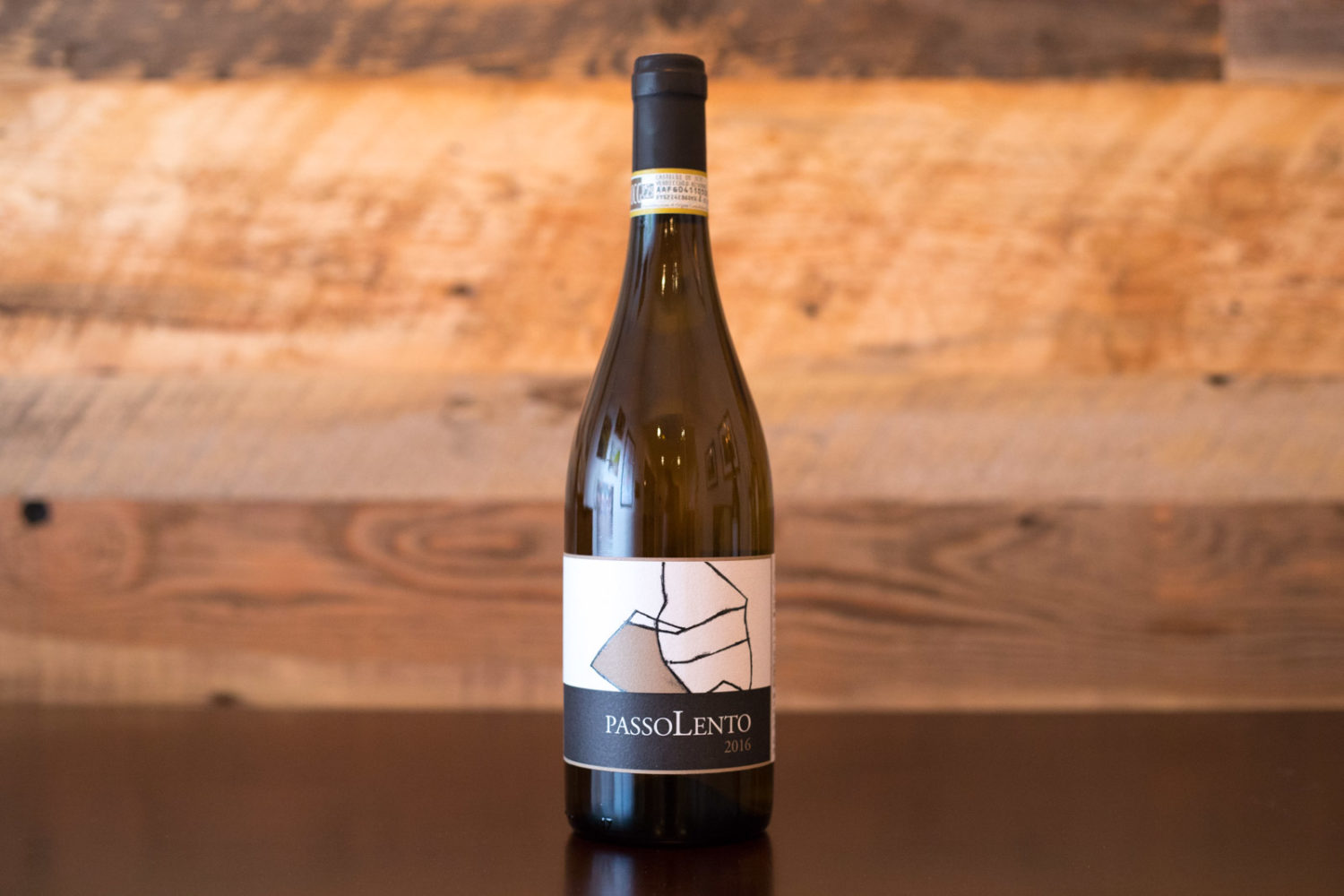
Although Fiano and Ribolla Gialla warrant consideration, Verdicchio may be Italy’s greatest indigenous white grape. I certainly find myself in the mood for Verdicchio (and its synonyms, Turbiana and Trebbiano di Soave) more than all other Italian whites. They have an easy comfort that adapts to any situation, and startling complexity when you really dig in and pay attention. This year, La Marca di San Michele’s PassoLento rose above all other Verdicchio. Radiant yellow-green in color with beautiful aromas suggesting crisp pear, key lime, white flowers, sassafras and enticing roasted almonds, the wine was irresistibly delicious yet grand in its scale. I wanted to turn off my brain and just drink it.
Imported by Kermit Lynch Wine Merchant.
Other Noteworthy Wines in This Style/Mood:
- 2017 La Marca di San Michele “CapoVolto” Verdicchio dei Castelli di Jesi Superiore
- 2013 Pievalta “San Paolo” Castelli di Jesi Verdicchio Riserva
- 2013 Terredora di Paolo “Campore” Fiano di Avellino
- 2017 Mastroberardino “Radici” Fiano di Avellino
- 2010 Pierluigi Zampaglione “Don Chisciotte” Fiano Campania
- 2017 Cantina Kurtatsch “Amos” Südtirol Weiß
- 2017 Cantina Terlano “Nova Domus” Alto Adige Riserva
- 2014 La Chablisienne Blanchot Chablis Grand Cru
- 2016 La Chablisienne Montée de Tonnerre Chablis 1er Cru
- 2014 Daniel-Etienne Defaix Chablis Vieilles Vignes
- 2013 Scarpa “I Bricchi” Barbera d’Asti

Poor Barbera. It will never get the same applause as Nebbiolo. But this high-acid, low-tannin red grape has a demeanor that suggests it doesn’t need the attention. It’s fine entertaining its most ardent fans — among them, me.
Monferrato’s Scarpa — who along with Giacomo Bologna, helped to vault Barbera onto the international stage in the 1970s — has experienced a renaissance, and today, they are as good as gold in the world of Barbera. I hemmed and hawed on whether to include their towering, iconic “La Bogliona” or their jolly fun “I Bricchi” for this list. Ultimately, I went with the quieter “I Bricchi” because it shows such a deft and silky touch, while remaining downright amiable. And if you are looking for complexity, look no further than the abundant fruit tones of this freewheeling wine.
Imported by PortoVino.
Other Noteworthy Wines in This Style/Mood:
- 2012 Scarpa “La Bogliona” Barbera d’Asti Superiore
- 2015 Oddero Barbera d’Alba Superiore
- 2016 Elvio Cogno Pre-Phylloxera Barbera d’Alba
- 2016 Luigi Giordano Langhe Rosso
- 2017 Foradori “Granato” Teroldego
- Non-Vintage Bérêche & Fils Champagne Brut Réserve Vieilles Vignes
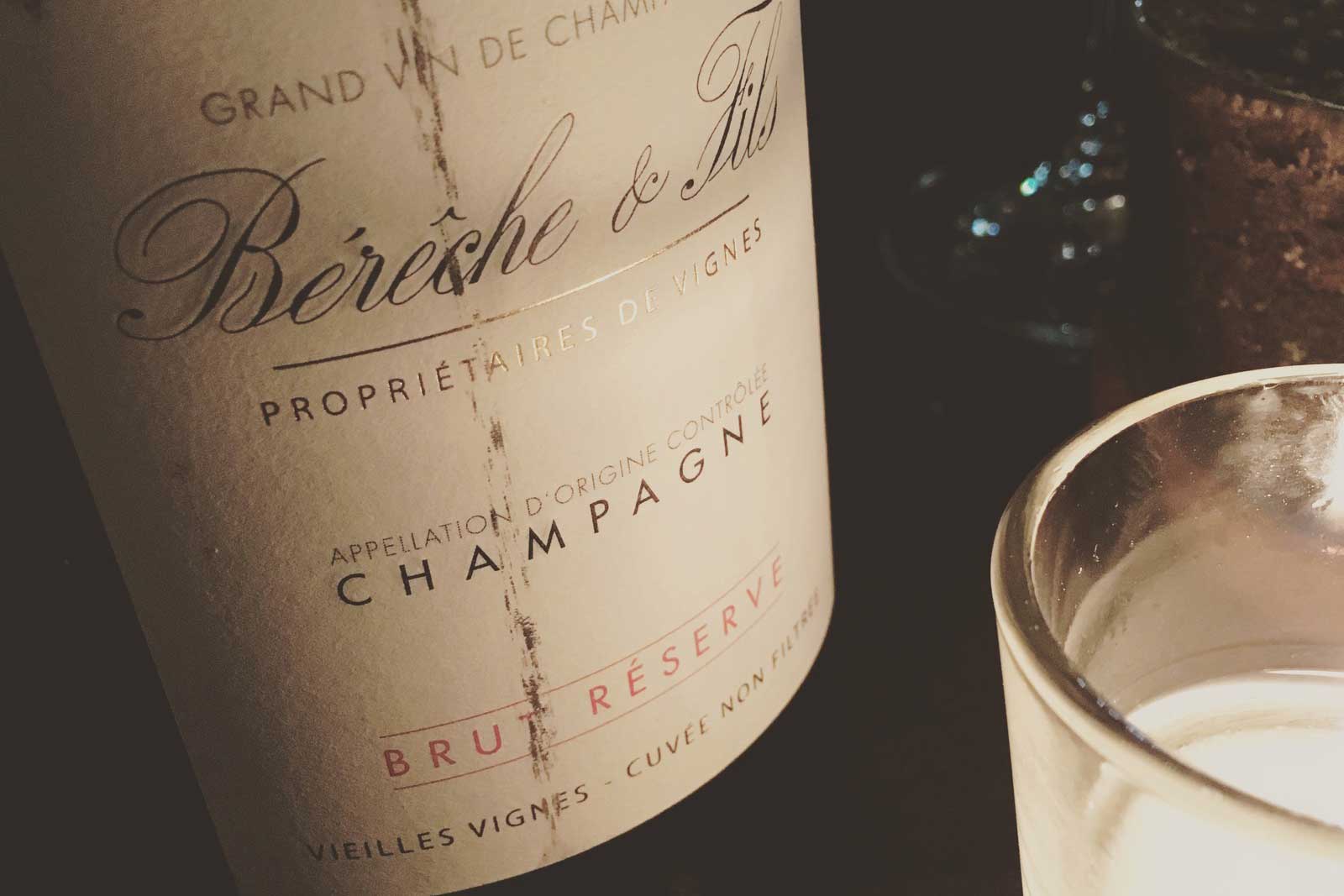
After Nebbiolo (see No. 4), traditional-method sparkling wine was the most competitive category in devising this list. As pitch-perfect as Billecart-Salmon’s Brut Réserve came across, as luscious and divine as Monte Rossa’s Prima Cuvée Brut Franciacorta was, and as wild and surprising as Endrizzi’s “Masetto Privé” seemed to be, no other sparkler this year captivated me quite like Bérêche & Fils Champagne Brut Réserve Vieilles Vignes. The fraternal tandem of Raphaël and Vincent Bérêche barrel-ferment and then age this wine under cork (—what are they, insane?). Along with careful selection of fruit from the Montagne de Reims and Vallée de la Marne, these tactics give their Brut Réserve a polished tone with bottomless depth. Shaped-shifting aromas of apple, peaches, faint tangerine, black pepper and freshly baked bread made me want to savor this wine all night long.
Imported by Old World Wine Co.
Other Noteworthy Wines in This Style/Mood:
- NV Billecart-Salmon Champagne Brut Réserve
- NV Bourdaire Gallois Brut Champagne
- NV Champagne Marie-Courtin “Resonance” Brut Champagne
- NV Monte Rossa Prima Cuvée Brut Franciacorta
- 2009 Endrizzi “Masetto Privé” Trento DOC
- 2013 Revì “Paladino” Riserva Extra Brut Trento DOC
- 2014 La Chablisienne Blanchot Chablis Grand Cru

Chardonnay resembles a Shakespearean script. You can mold it into something modern and surprising, or you can create a classical production that underscores why it is still considered the best.
In Chablis, Chardonnay often falls into the latter camp, with very few winemakers straying from tradition. This “production” from the region’s largest landowners — the co-op of La Chablisienne — followed the script meticulously, and as a result, it revealed why Chardonnay endures at the top of the pyramid. Sourced from the Grand Cru Blanchot, it is a towering wine of amplification but with little deviation: intense aromas recalled crisp apple, grapefruit, honeycomb, green herbs and creme brûlée. The gravity of its rich fruit and toasty oak tones are balanced by a freshness and light-as-a-feather structure that calls for a standing ovation. It is a wine that speaks to the superior terroir (and all the fuss) that only a Grand Cru can provide.
Imported by T Elenteny Imports.
Other Noteworthy Wines in This Style/Mood:
- 2016 La Chablisienne Montée de Tonnerre Chablis 1er Cru
- 2014 Daniel-Etienne Defaix Chablis Vieilles Vignes
- 2017 Domaine Savary Chablis Vieilles Vignes
- 2014 Ronchi di Cialla Ribolla Gialla Friuli Colli Orientali
- 2016 La Marca di San Michele “PassoLento” Castelli di Jesi Verdicchio Riserva
- 2017 La Marca di San Michele “CapoVolto” Verdicchio dei Castelli di Jesi Superiore
- 2017 Santo Wines Santorini Assyrtiko
- 2013 Cardedu “Caladu Canonau” Canonnau di Sardegna

Cardedu is a small brand of wines from the Alberto Loi estate on the island of Sardinia. I came across no other winery this year that combines pure deliciousness with complexity and affordability quite like Cardedu.
The “Caladu Canonau” is a Cannonau di Sardegna that sheds its Grenache clothing to run naked like a naturalist Beaujo. I loved it for its aromas of herbal blackberry and black tea, for its soft tannins, and distinct juiciness on the finish. At $18, I bought four bottles over the course of the year, which is three more bottles than any other wine I bought in 2019. As if to confirm my hypothesis that it resembled Cru Beaujolais, I served it blind to my tasting group during our Gamay session. It fooled everyone. If it weren’t for No. 1 on this list, I’d say that “Caladu” was the year’s most surprising wine.
Imported by PortoVino.
Other Noteworthy Wines in This Style/Mood:
- 2017 Cardedu “Praja” Monica di Sardegna
- 2017 Giovanni Montisci “Barrosu” Cannonau di Sardegna
- 2014 Vestini Campagnano Pellagrello Nero
- 2017 Mastroberardino Lacryma Christi del Vesuvio
- 2018 Foradori “Lezer” Teroldego
- 2016 Jean-Foillard Morgon Côte du Py
- 2017 Julien Cécillon Saint Pierre Cornas
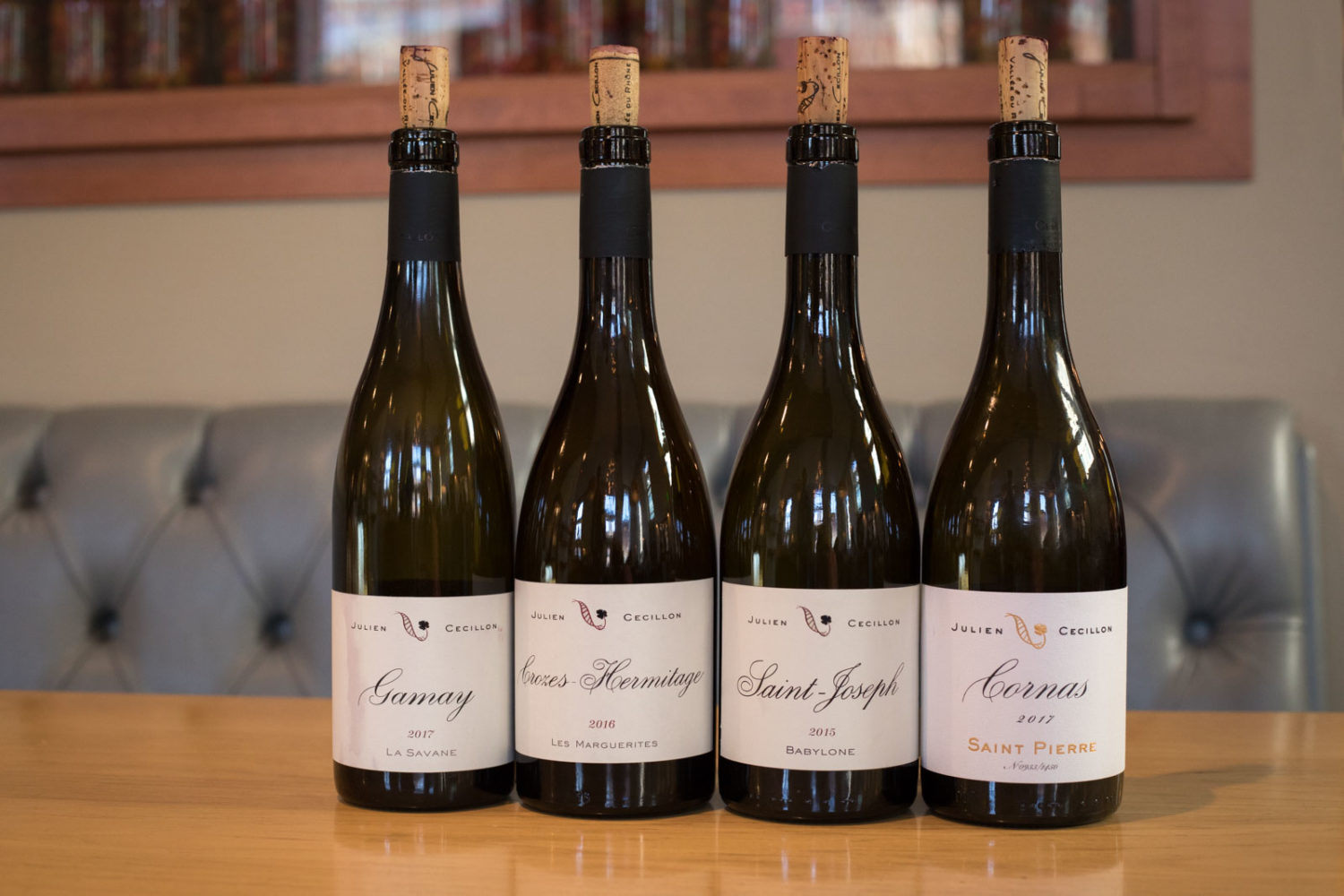
Julien Cécillon is a winemaking wizard. Anything I could ever want and search for in Syrah (and to a lesser extent Gamay and Marsanne) is found in his elegantly labeled wines.
Earlier this year, Cécillon — who is the grandson of Northern Rhône legend Jean-Louis Grippat — came to Denver bearing his debut effort from Cornas, called Saint Pierre. It was like watching a rookie take home the MVP award: one does not expect to find a winemaker discovering his groove in a new appellation so quickly. All the classic markers of Rhône Syrah were neatly packaged with a bow, as were some surprises, like a tangy quality suggestive of tangerines, and a spicy hit like cardamom.
Cécillon’s “Babylone” Saint-Joseph made my list two years ago. I have a feeling this talented winemaker will keep finding ways to impress well into the future.
Imported by Paris Wine Company and Verity Wines.
Other Noteworthy Wines in This Style/Mood:
- 2015 Domaine Vincent Paris “Granit 30” Cornas
- 2016 Domaine Anne Gros & Jean-Paul Tollot Les Carrétals Minervois
- 2017 Foradori “Granato” Teroldego
- 2018 Foradori “Sgarzon” Teroldego
- 2018 Foradori “Morei” Teroldego
- 2017 Martha Stoumen Nero d’Avola
- 2016 Oddero Barbaresco Gallina
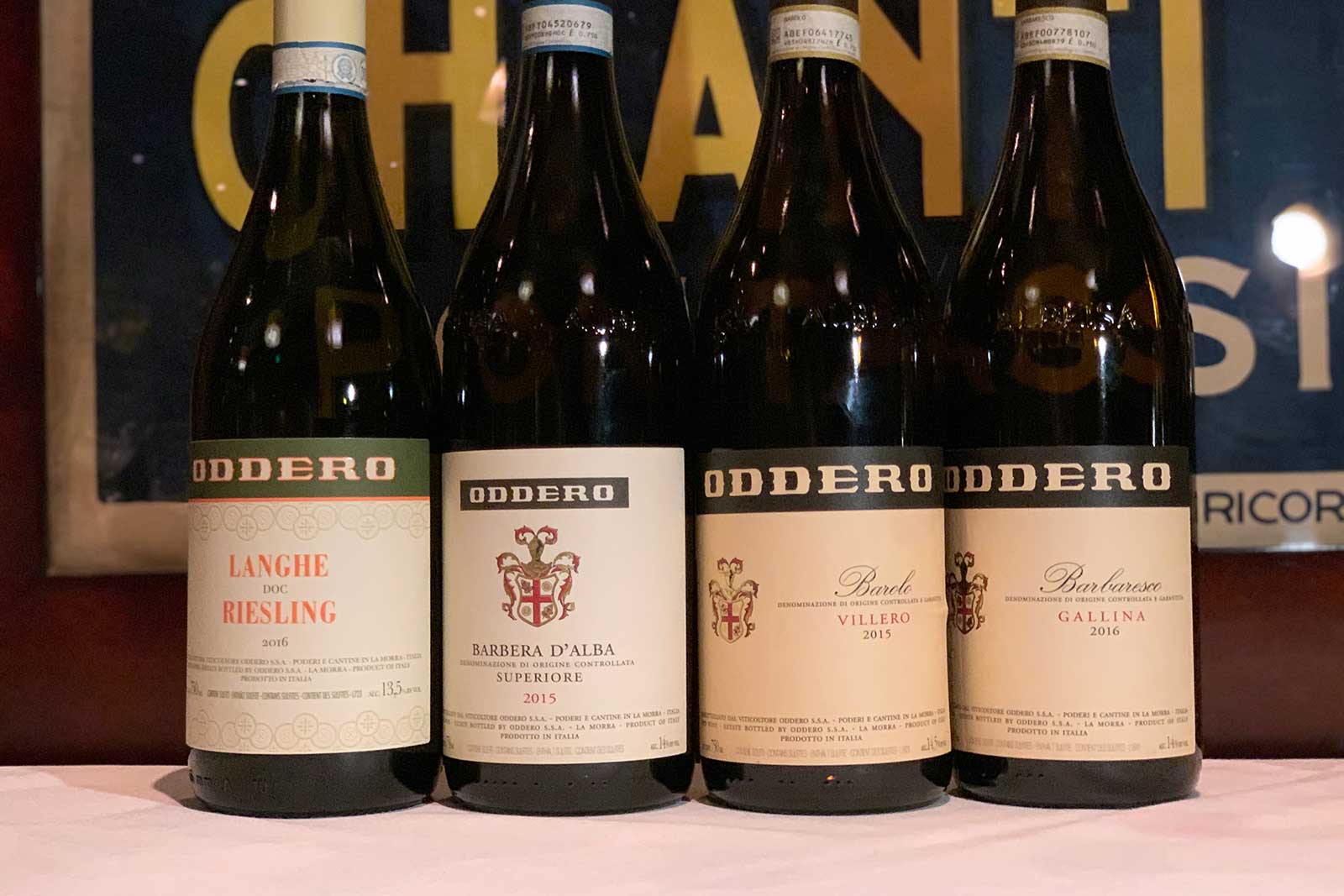
Nebbiolo is such an obsession of mine that earlier in the year, I decided to create a quarterly column solely about it. I’m by no means alone in this fixation (as the influx of readers for those articles can attest), but it also means a tricky situation when it comes to creating a Top 10 list. Nebbiolo makes this whole endeavor feel silly: seven or eight wines from the grape could easily have qualified in the top 10 (see below).
However, an old favorite rose above the others to register as the most compelling Nebbiolo of the year. The Oddero family’s steady hand at winemaking means the Barbaresco Gallina was an affirmation of many things. That no other place stokes the coals of my wine enthusiasm quite like Barbaresco. That no other grape can give such generous complexity — yet remain allusive and hard-to-pin-down. And that few winemakers can nail it every time quite like the Oddero family.
Sipping this wine in Denver, I was taken back to La Morra, where I sipped it two years ago at their family winery. It was teleportation via aroma. The Barbaresco Gallina’s tones of black cherry, soft leather and violets will always take me to Piedmont — a comforting thought should I ever lose the ability to travel there.
Rather than chasing what’s exciting and new, let’s take a moment and honor this classic.
Imported by Polaner Selections and The Piedmont Guy.
Other Noteworthy Wines in This Style/Mood:
- 2015 Oddero Barolo Villero
- 2014 Mauro Veglio Barolo Arborina
- 2016 Giuseppe Cortese Barbaresco Rabajà
- 2016 Ca’ del Baio Barbaresco Asili
- 2014 Barbacàn “Söl” Valtellina Superiore Valgella
- 2012 Terredora Dipaolo “Fatica Contadina” Taurasi
- 2014 Mastroberardino “Redi More” Irpinia Aglianico
- 2015 Domaine Alain Jeanniard Côte de Nuits-Village Vieilles Vignes
- 2014 Domaine Karydas Xinomavro Naoussa
- 2015 Charles Joguet Clos de la Dioterie Chinon
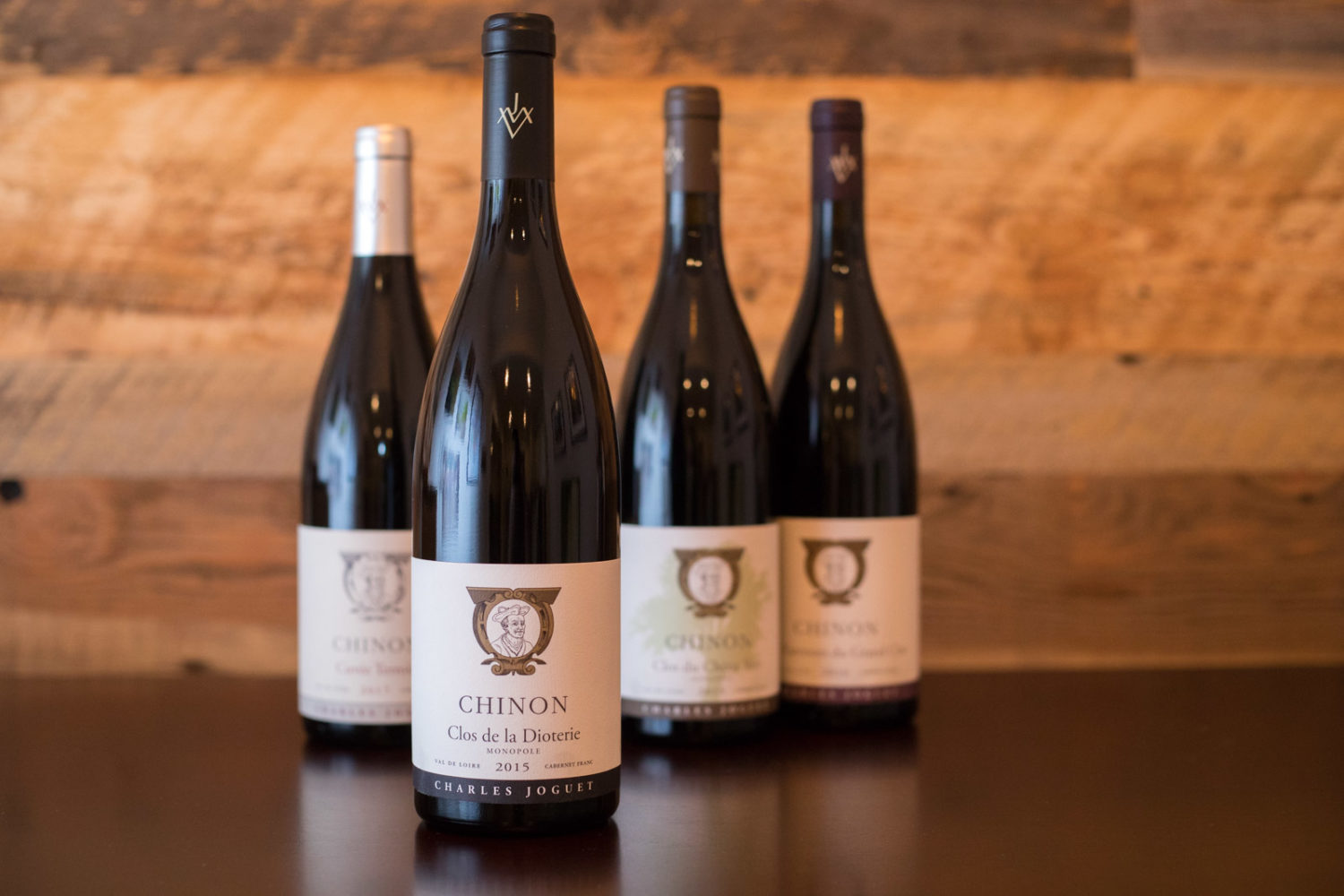
Cabernet Franc has always struck me as an old soul. Never mind its genetic lineage as the father of both Cabernet Sauvignon and Merlot — it feels like it comes from another time and place. In the Loire, Cabernet Franc’s predilection for dark fruit and peppercorns, as well as sandpaper tannins in youth, make it an acquired taste. You either understand it or you ask for the cocoa caress of Cabernet Sauvignon instead.
Of all the wines I met this year, Charles Joguet’s Clos de la Dioterie — a 100% Cabernet Franc from Chinon — had the most indelible personality. In my notes, I wrote “a wily fox.” Everything about this monopole vineyard is difficult for farming: 75- to 85-year-old vines, ancient soils, and a northern exposure that not only slows ripening, but makes it nearly impossible in colder vintages. The 2015’s biting tannins and slippery nature (black raspberry or ripe plums? musk or leather? peppercorns or pepper jelly?) made it seem like an elusive animal that didn’t want to be captured.
Imported by Kermit Lynch Wine Merchant.
Other Noteworthy Wines in This Style/Mood:
- 2015 Charles Joguet Clos de Chêne Vert Chinon
- 2017 Charles Joguet Cuvée Terroir Chinon
- 2016 Arnaud Lambert Château de Brézé Clos Mazurique Saumur
- 2016 Château Yvonne Lîle Quatre Sous’ Saumur-Champigny
- 2014 Clos du Jaugueyron “Nout” Marguax
- 2016 Tröpfltalhof “Barleith Anphora” Cabernet Sauvignon
- 2015 Russiz Superiore Cabernet Franc
- 2013 Badia a Coltibuono Montebello
- 2017 Brash Higgins McLaren Vale Cabernet Franc
- 2016 Passopisciaro “Contrada S” Terre Siciliane

Because it draws its concentrated power from 70- to 100-year-old Nerello Mascalese vines, Passopisciaro’s Contrada S Terre Siciliane could easily scream “OLD VINES” on the label. But instead, like the other wines in Passopisciaro’s Contrada series, it screams about the vintage.
That has always struck me as an odd choice given the primacy of place on the slopes of Etna, but after I stepped off this roller coaster of a wine in July, I suddenly understood. Those big numbers are an invitation: Come back next year. It’ll be different. Perhaps wilder.
The memory of this wine is still so strong, I don’t need to refer to my notes. Concentrated but not extracted, powerful yet still elegant, and a finish reminiscent of black truffles that lingered like the final symphonic note of “A Day in the Life” by The Beatles.
Imported by T Edward Wines and Giuliana Imports
Other Noteworthy Wines in This Style/Mood:
- 2016 Donnafugata “Sul Vulcano” Etna Rosso
- 2013 Marco Sferlazzo “Porta del Vento” Perricone Terre Siciliane
- 2009 Nera Sforzato di Valtellina
- 2017 Cirillo “1850” Barossa Valley Grenache
- 2018 Foradori Fontanasanta Nosiola

In so many ways, this wine is the exact opposite of my No. 2 wine. While they both hail from high-elevation terroir — and each possessed the most indelible aromas of the year — Foradori’s Fontanasanta Nosiola derives its magic not from the power of a mighty volcano, but rather the quiet serenity of the Alps.
Nosiola is one of Italy’s forgotten grapes, but in the capable hands of Elisabetta Foradori and her son, winemaker Emilio Zierock, it deserves the spotlight. This wine is born of patience, undergoing eight months of maceration in clay tinaja so that Nosiola’s secret-garden aromas can emerge to full effect. Reminiscent of honeydew, candied papaya and honeysuckle flowers, the wine lends no easy frame of reference. The only easy thing about it is drinking it.
The Foradori Fontanasanta Nosiola may be the greatest white wine I’ve ever tasted, and I do not make that proclamation lightly.
Imported by Louis/Dressner.
Other Noteworthy Wines in This Style/Mood:
- 2018 Foradori Fontanasanta Manzoni Bianco
- 2018 Foradori Fuoripista Pinot Grigio
- 2018 Cantina Isarco “Aristos” Grüner Veltliner
- 2018 Abbazia di Novacella Praepositus Grüner Veltliner
- 2018 Pacherhof Kerner
- 2018 Alois Lageder “Porer” Pinot Grigio
- 2016 Tröpfltalhof “Garnellen” Anphora Sauvignon
- 2016 Villa Calcinaia “Comitale” Bianco dei Colli della Toscana Centrale
- 2017 Lunaria Orsogna Civitas Pecorino
- 2018 Terredora di Paolo “Corte di Giso” Falanghina Irpinia
- 2018 Mortellito Calalancu Bianco
- 2018 Cardedu “Nou” Vermentino
- 2016 Skouras “Salto” Moscofilero Wild Yeast
Treasure Hunt Wines
I love hard-to-find wines, and I don’t mind writing about them. But listing them in the Top 10 feels a bit like a tease. Nonetheless, here I am footnoting two wines that captivated me this year. I can’t help it.
The 2015 Domaine Alain Jeanniard Côte de Nuits-Village Vielles Vignes is no ordinary village-level Burgundy. Its depths and touch-of-spice come from 100-year-old vines that were trained on a Cordon Royat system for lower yields and riper tannins. My impression was not of Burgundy, but of Pinot Noir from another planet. It was still young, but earthy, fruity and 100% compelling.
Meanwhile, the 2010 Pierluigi Zampaglione “Don Chisciotte” Fiano Campania shows Italy’s other great white grape (see No. 10 above) stepping outside its celebrated Avellino and shining brilliantly from the border region next to Basilicata. Extended maceration gives this aged beauty a little more tannin and quite a bit more oomph on the aromas. Redolent of nectarines, wildflowers and pecans, it is an utterly, utterly wild wine.
And Four for the Ages
As with the “treasure-hunt wines,” back vintages are a bit of a different dance. I don’t seek them out for coverage as much as they just seem to find me. Plus, vintage variation and — more importantly — proper storage conditions mean you are not likely to taste what I tasted at that moment. They are all at once fragile yet potent.
At this point, it seems silly to have to say this, but yes, some white wines can age magnificently. But Pinot Bianco? Sauvignon Blanc? Those haven’t been grapes I’ve explored on the cellaring spectrum. The Cantina Terlano “Nova Domus” Alto Adige Riserva has rightly been called an icon of Alto Adige, and I can see why now, having tasted it nine years after the incredible 2010 vintage. A blend of Pinot Bianco, Chardonnay and Sauvignon Blanc, it sings with sweet fruit and flowers with a generous but hard-to-pin-down savory quality that is rare in an old white. A true shape-shifter.
It probably goes without saying, however, that Nebbiolo wines will outlive us all. This year, I was fortunate to encounter a Barolo and Barbaresco in their absolute prime. The 2010 Marengo Barolo Brunate revealed how silky and floral middle-aged Nebbiolo wines can be, while the 2005 Dante Rivetti Barbaresco Bricco Riserva offered something quite different: an earthy, tarry headline with traces of slowly fading fruit underneath. I would have expected Barolo to unearth the tar and Barbaresco to reveal the silk, but these two flipped the script.
Finally, my wish for you in 2020 is that you may have friends like my pals Tom and Steve. The world of wine is full of generous people who see your interest in wine, and without hesitation, offer to open something they’ve held on to for years.
Tom and Steve are local friends and restaurant industry veterans who have quietly built an amazing wine cellar by going to auctions where the cellars of closed restaurants are liquidated. Classic vintages are bundled with quite a few junkers, but they’ve been able to score some ridiculous wines for a decent price, and they’ve been unbelievably generous with my tasting group. In February, we turned our attention to Champagne, and they generously unearthed a bottle of 1989 Krug Champagne from the now defunct Brook’s Steakhouse. It was a touch oxidized, but still very active on the palate, revealing those wonderfully baked apple and nutty surprises that make Champagne lovers swoon. But in the end, who cares about tasting notes. Wine is to be shared, not hoarded. Cheers to people like Tom and Steve.
Honorable Mentions
Because (a) they deserve a shout-out, (b) they didn’t fit easily into the style/mood categories, and (c) 100 is a nice round number, here are even more wines to seek out.
11. 2015 Arnaud Lambert “Clos David” Saumur Blanc
12. 2018 Cantina Valle Isarco “Aristos” Sylvaner
13. 2017 Villa Calcinaia Rosato
15. 2018 Martha Stoumen “Honeymoon”
19. 2006 Pfitscher Matan Pinot Nero Riserva
22. 2016 Château Pesquié Quintessence Blanc
24. 2017 Lady of the Sunshine Lindsley Vineyard Pinot Noir
27. 2013 Castello di Rubbia Terrano Carso-Kras
31. 2016 Domaine Anne Gros & Jean-Paul Tollot La Ciaude Minervois
40. 2016 Cantina Terlano “Vorberg” Pinot Bianco Riserva
55. 2013 Azienda Agricola Binomio Montepulciano d’Abruzzo Riserva
91. 2014 Alejandro Fernandez “Tinto Pesquera” Ribera del Duero Crianza





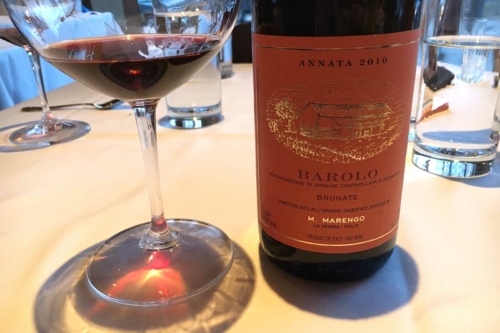


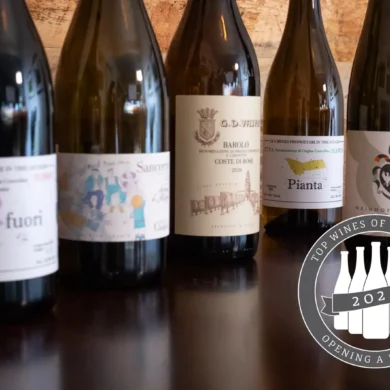


I appreciate the originality of your list. It is so good to see wines that are distinct from those which tend tko populate other lists. Well done!
Thank you Vin. I hope you come back often! Cheers…